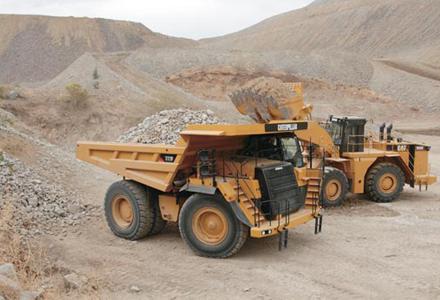
Europe is starting to look closer to home for essential raw materials as globalisation creates fierce competition for non-energy commodities. Robert Camp looks at the issues
By the end of this year the
Some 30 million jobs in Europe and 70% of EU manufacturing depend on access to mineral raw materials, of which some 3billion tonnes are required every year. Demand is expected to increase significantly in the next five to 10 years, even with increased recycling and the initiative is designed to ensure materials are available to meet this growth.
The Commission has recognised that access to deposits is becoming increasingly difficult due to competing land uses, conservation measures, growing regulatory constraints and public opinion which is based on a lack of understanding of the demands for and consequences of mineral extraction. The European minerals industry has worked closely with the Commission to develop the strategy, including a conference in Madrid in June which concluded with the Madrid Raw Materials Declaration, the key points of which are:
• At European level, a raw materials policy needs to be promoted, defining the strategy to ensure that Europe in future will have sufficient supplies of raw materials and sufficient access to indigenous raw materials;
• There is a need to develop corresponding raw materials policies at national, regional and local levels to ensure good current and future access to the raw materials geologically present;
• Associated land-use planning policies to ensure that land-use development for minerals extraction around these geologically-present resources is preferentially treated are also necessary;
• Adopting best practice in permitting procedures following good examples from other Member States, to ensure permits are granted in a timely and efficient manner and for durations that justify the significant capital investments involved.
From a legal perspective the most interesting developments are likely to be around land-use planning and permitting, both of which will need to be underpinned by the over-arching policies being recommended at a macro level.
The Madrid Declaration points to there being an unbalanced pre-disposition against extractive industries that needs to be addressed. Given that the location of minerals resources is geologically-determined, the argument is that these resources deserve the same status in land-use planning as other issues, like water.
Land-use plans should therefore take account of issues specific to the minerals industry, including a mid to long-term planning horizon to ensure sustainable access to resources.
Planning policies should also reflect the likely minerals needs that will arise from significant development activity such as major infrastructure projects, including access routes within areas which lack mineral deposits and will therefore have to import material.
At a more local level, planning authorities would be expected to be mindful of the sterilising effect of granting planning permission for dwellings and other buildings or development close to a planned or actual quarry pit or area.
By giving the extraction industry at least the same importance as other spatial interests, there would be potential to open up for mining areas which have hitherto been protected under conservation law.
This has the potential to be the most controversial aspect of the Raw Materials Initiative, but is a logical extension of putting the minerals industry on an equal footing in planning terms as other spatial considerations. Reform of the permitting system is another key outcome of the Madrid conference, with calls for a clear legislative structure that allows for the efficient and timely granting of permissions for projects.
This would include a time-limited application process of just three years in order to stop applications being strung out for 10 or even 15 years, as can happen now.
Mine or hard rock quarries would have a 50-year timescale, with no permissions of less than 15 years, and there would be a clear appeals process, determined at a high level by experts in the field who can make objective decisions away from politics.
For policy and lawmakers these are major changes that will require a concerted pan-European effort, within European and national frameworks, and the onus will fall on the planning authorities to square the circle between resource demands and environmental protection.
It is hard to say how much of the Madrid Declaration will be included in the final Raw Materials Initiative report, which is expected by the end of the year, but the fact that members of the European Commission, the









